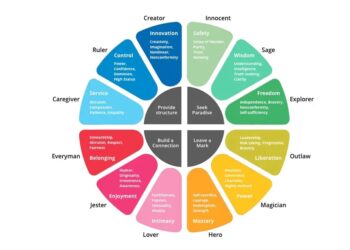Harnessing Personalization in Marketing: Strategies for Behavioral Targeting, Dynamic Content, Personalized Recommendations, and 1-to-1 Marketing
Introduction
In today’s highly competitive market, personalization is key to capturing consumer attention and building lasting relationships. Personalization in marketing goes beyond using a customer’s name in an email; it involves tailoring marketing messages, offers, and experiences based on individual consumer behaviors, preferences, and data. This approach can significantly enhance customer engagement, increase customer loyalty, and drive higher conversion rates. This guide delves into the core strategies of personalization, including behavioral targeting, dynamic content, personalized recommendations, and 1-to-1 marketing, providing insights on how they can be effectively implemented.
1. Behavioral Targeting
Behavioral targeting involves analyzing consumer actions, such as past purchases, browsing history, and search patterns, to deliver marketing messages that align with their demonstrated interests and behaviors.
Benefits:
- Increased Relevance: Messages tailored based on past behaviors are more likely to be relevant and engaging to the consumer.
- Higher Conversion Rates: Consumers are more likely to respond to content that is directly relevant to their interests and needs.
- Efficient Use of Marketing Resources: Focusing efforts on consumers whose behaviors suggest a higher propensity to purchase can improve ROI.
Best Practices:
- Data Privacy Compliance: Ensure all behavioral targeting practices comply with data privacy laws and regulations.
- Segmentation: Use behavioral data to segment consumers into groups with similar behaviors and tailor marketing strategies accordingly.
- Continuous Optimization: Regularly update and refine behavior-based profiles as new data becomes available.
2. Dynamic Content
Dynamic content refers to digital content that changes based on the interests, preferences, or past behavior of the viewer. It is commonly used on websites, in emails, or within application interfaces.
Benefits:
- Enhanced User Experience: Dynamic content adapts to the user, making their experience more intuitive and satisfying.
- Increased Engagement: Content that aligns with the user’s preferences tends to keep them engaged longer.
- Better Conversion Rates: By providing content that meets users’ needs at the right moment, dynamic content can effectively guide them along the sales funnel.
Best Practices:
- Use Robust Technology: Implement technology capable of handling complex data inputs and rendering dynamic content quickly.
- A/B Testing: Regularly test different versions of dynamic content to determine which most effectively drives engagement and conversions.
- Contextual Relevance: Ensure the dynamic content is contextually appropriate, enhancing its relevance and impact.
3. Personalized Recommendations
Personalized recommendations are suggestions made to users based on their previous actions, such as viewing history, purchase history, or interactions with similar users. These are commonly seen in e-commerce and streaming platforms.
Benefits:
- Tailored Shopping Experience: Helps customers discover products or content that match their tastes and preferences, enhancing their shopping experience.
- Increased Sales: Recommendations can introduce customers to products they may not have found on their own, increasing the likelihood of additional sales.
- Customer Retention: Providing relevant recommendations can increase customer satisfaction and loyalty.
Best Practices:
- Sophisticated Algorithms: Utilize advanced algorithms to analyze user data and generate accurate recommendations.
- Feedback Mechanisms: Allow users to provide feedback on recommendations to continuously improve the accuracy and relevance of suggestions.
- Transparency: Let users know why they are seeing specific recommendations to build trust and understanding.
4. 1-to-1 Marketing
1-to-1 marketing is a strategy aimed at tailoring marketing efforts to individual customers through personalized interactions. This strategy seeks to treat customers as individuals with unique tastes and preferences.
Benefits:
- Deep Customer Relationships: Personal interactions can foster deeper emotional connections between a brand and its customers.
- Enhanced Customer Loyalty: Personalized attention and service encourage loyalty and repeat business.
- Improved Customer Insights: Direct interactions provide valuable insights into individual customer preferences and needs.
Best Practices:
- Comprehensive Customer Profiles: Build detailed customer profiles that gather data from various touchpoints to facilitate deeper personalization.
- Real-Time Interaction: Use real-time data to tailor interactions as they occur, making them more relevant and impactful.
- Consistency Across Channels: Ensure that personalized interactions are consistent across all channels, whether online, in-app, or in-store.
Personalization is transforming marketing by making it more relevant, engaging, and effective. By leveraging strategies like behavioral targeting, dynamic content, personalized recommendations, and 1-to-1 marketing, brands can create more meaningful and productive relationships with their customers. These personalized experiences not only enhance customer satisfaction but also drive business growth through higher engagement and loyalty. As technology and data analytics continue to advance, the potential for personalization in marketing will only increase, offering new opportunities to connect with customers in innovative and impactful ways.















